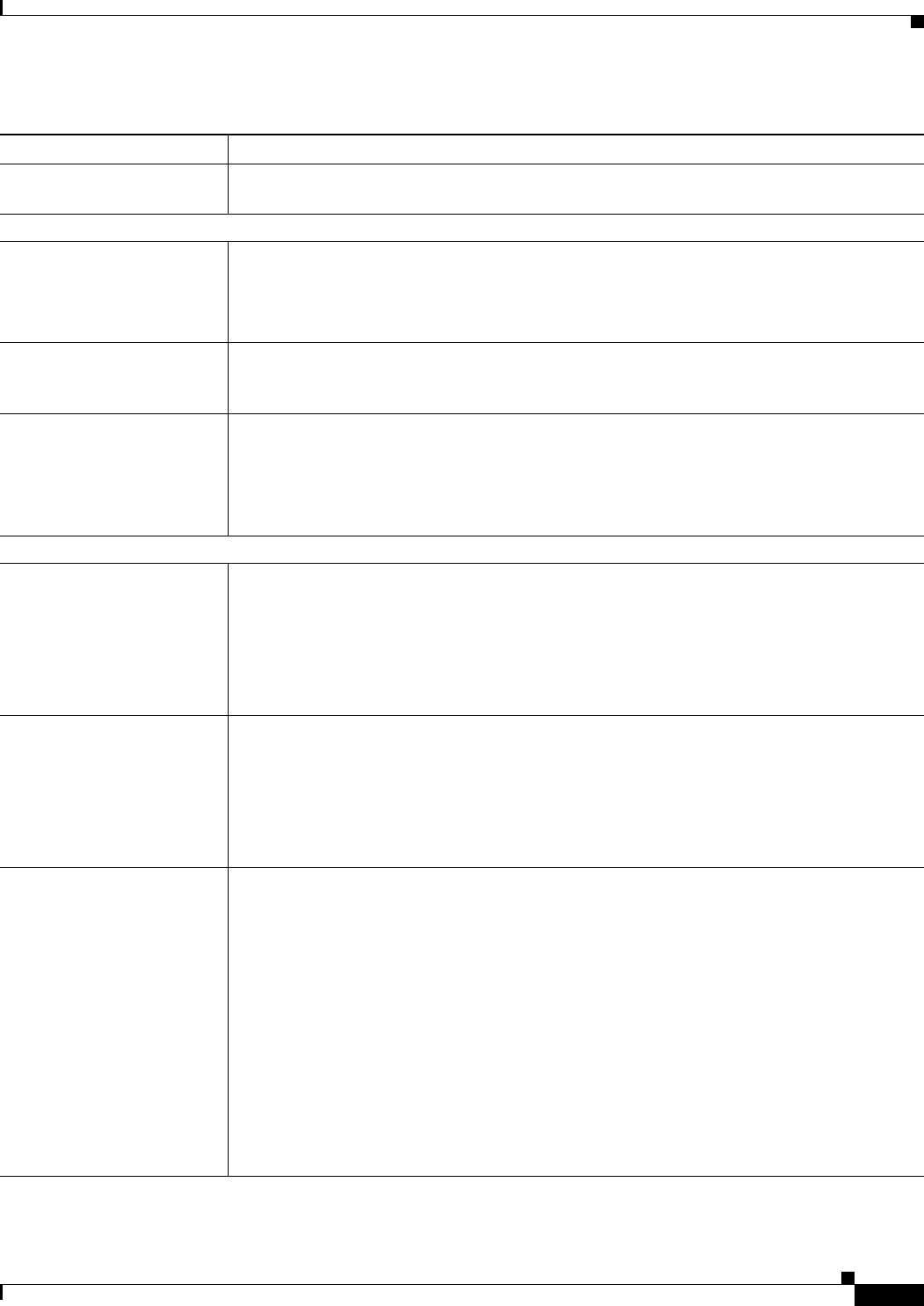
64-17
Cisco Unified Communications Manager Administration Guide
OL-18611-01
Chapter 64 Directory Number Configuration
Directory Number Configuration Settings
Park Monitoring Reversion
Timer
This release of Cisco Unified Communications Manager does not support this setting.
MLPP Alternate Party Settings
Target (Destination) Enter the number to which MLPP precedence calls should be diverted if this directory number
receives a precedence call and neither this number nor its call forward destination answers the
precedence call.
Values can include numeric characters, octothorpe (#), and asterisk (*).
MLPP Calling Search Space From the drop-down list box, choose the calling search space to associate with the MLPP
alternate party target (destination) number. For configuration information about calling search
space for directory numbers, see the
“Calling Search Space” section on page 64-23.
MLPP No Answer Ring
Duration (seconds)
Enter the number of seconds (between 4 and 60) after which an MLPP precedence call will be
directed to this directory number alternate party if this directory number and its
call-forwarding destination have not answered the precedence call.
Leave this setting blank to use the value that is set in the Cisco Unified Communications
Manager enterprise parameter, Precedence Alternate Party Timeout.
Line Settings for All Devices
Hold Reversion Ring
Duration (seconds)
Enter a number from 0 to 1200 (inclusive) to specify the wait time in seconds before issuing
a reverted call alert to the holding party phone.
If you enter a value of 0, Cisco Unified Communications Manager does not invoke the reverted
call feature for a held call.
At installation, this field remains blank. If you leave this setting blank, the Hold Reversion
Duration timer setting for the cluster applies.
Hold Reversion Notification
Interval (seconds)
Enter a number from 0 to 1200 (inclusive) to specify the interval time in seconds for sending
periodic reminder alerts to the holding party phone.
If you enter a value of 0, Cisco Unified Communications Manager does not send reminder
alerts.
At installation, this field remains blank. If you leave this setting blank, the Hold Reversion
Notification Interval timer setting for the cluster applies.
Party Entrance Tone From the Party Entrance Tone drop-down list box, choose one of the following options:
• Default—Use the value that you configured in the Party Entrance Tone service parameter.
• On—A tone plays on the phone when a basic call changes to a multi-party call; that is, a
barge call, cBarge call, ad
hoc conference, meet-me conference, or a joined call. In
addition, a different tone plays when a party leaves the multi-party call. If the controlling
device, that is, the originator of the multi-party call has a built-in bridge, the tone gets
played to all parties if you choose On for the controlling device. When the controlling
device leaves the call, Cisco Unified Communications Manager identifies whether
another device on the call can play the tone; if another device on the call can play the tone,
Cisco Unified Communications Manager plays the tone. If the controlling device cannot
play the tone, Cisco Unified Communications Manager does not play the tone even if you
enable the party entrance tone feature.
• Off—A tone does not play on the phone when a basic call changes to a multi-party call.
Table 64-1 Directory Number Configuration Settings (continued)
Field Description


















